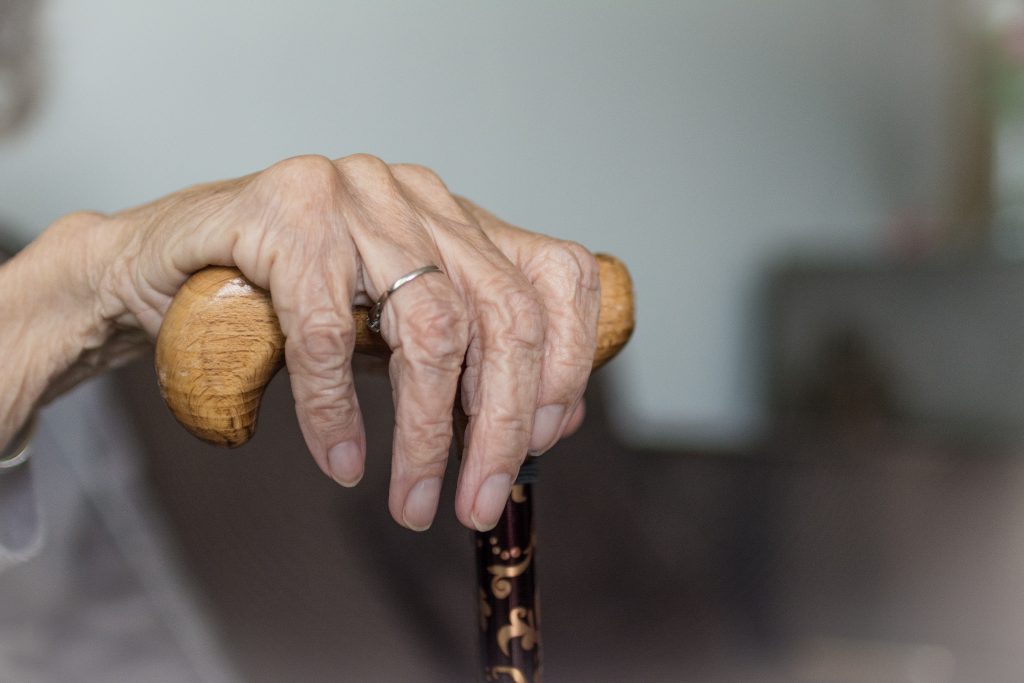
April is National Parkinson’s Awareness Month, which means in Hernando and elsewhere around the country, it will be time to contribute to ongoing research aimed at eradicating this dread disease. Even if you can’t make a contribution, you can learn about the disease and its causes, and try to make others more aware of the early signs of the disease. Senior home care professionals often have the opportunity to provide care for Parkinson’s patients, and their status will depend on how far advanced the disease has gotten. When symptoms are first becoming obvious, that’s the best time to begin planning for Parkinson’s disease, because it really is a life-changing event, for both the patient and all loved ones.
Early-stage Parkinson’s
Typically, the observable symptoms in someone who has early-stage Parkinson’s are relatively mild, although they can be quite diverse. Everyone is affected differently by the disease, so it may cause forgetfulness, tremors in the hands, significant mood swings, changes in personality, depression, dementia, or arthritis. In most cases, whichever of these symptoms a patient has will gradually worsen over time and may become quite severe. However, this will generally not be the case in an early stage of the disease.
Stage One of Parkinson’s Disease is often difficult to diagnose because symptoms are usually so mild that they can’t be distinguished from normal motions and behaviors. When symptoms do appear, it’s usually on one side of the body, and they aren’t severe. There could be a very mild form of tremors, often in one hand or the other, and one particular leg may feel more awkward than the other. It’s also possible for one side of the face to be affected, such that the patient’s expression is affected.
Stage Two of Parkinson’s progresses to showing symptoms on both sides of the body, as opposed to the one-sided characteristics of Stage One. In most cases, Stage Two does not make an appearance until several months or years have passed with the patient remaining in Stage One Parkinson’s. Some of the most prominent symptoms of Stage Two Parkinson’s include the following:
- loss of facial expression on both sides of the face
- reduction of the frequency of blinking
- soft or monotone speaking voice
- speech abnormalities, occurring more frequently
- slurred speech
- stiffness in the joints
- hunched over posture
- slow approach to daily activities
- fading volume of speech after initial loudness
At this point, a patient is generally still able to manage daily living conditions, although some assistance is helpful.
Planning for Parkinson’s
A patient will generally be in either Stage One or Stage Two of Parkinson’s Disease for a period involving several months or several years. This allows time for planning for the inevitable worsening symptoms that will eventually show up, and degrade the quality of life of the patient. One of the biggest impacts for both patient and caregiver is the initial diagnosis of Parkinson’s because it can be a huge shock to the system, and obviously, it will have a major impact on both their lives from that point forward.
During Stage Two of the disease, it first becomes necessary for a caregiver to provide more assistance to the patient, even if it’s just to help with the increasing slowness of activity. Caregivers also are sometimes obliged to remind their patients to keep up with physical exercises and with vocal exercises that help to maintain speech quality. It will often be necessary for the caregiver to begin managing medications, so as to ensure that the patient is always taking the appropriate prescriptions on time.
One of the most important planning requirements with Parkinson’s involves conserving energy for the patient. Since they will tend to become run-down much easier than in the past, it’s necessary to plan activities so that energy can be conserved for the most meaningful tasks and activities. Keeping in mind that Parkinson’s will affect literally every aspect of a patient’s life, planning should embrace all those daily actions. Planning for daily dressing should include providing a chair for the patient to sit in while dressing, so they can keep their balance better.
Bathing should have a hand-held hose for showering or bathing, and there should be a chair available for the patient to sit in during the process. Trips to the bathroom can be made easier by placing a bedside commode near the patient, within easy reach. When planning for personal hygiene and grooming, a chair should be available during all grooming activities. Eating and drinking actions should never be rushed but should be approached meaningfully and slowly. The patient should be provided with a plate that has a lip around the perimeter, so foods won’t fall off the plate, and cannot easily be knocked off either.
At the first signs of Parkinson’s, and after the shock of diagnosis wears off, that is the right time to begin planning for the long road ahead. Your loved one should be made as comfortable and capable as is safely possible, and some pre-planning can make everything happen more smoothly.
